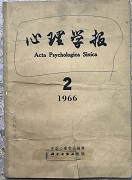|
|
THE EFFECTS OF VARIOUS INTENSITIES OF ILLUMINATION ON THE EFFICIENCY OF STUDY AND VISUAL ACUITY
HU JUI--JUNG
1966, 10 (2):
12-20.
Six 100 W light bulbs were set in a classroom. They were controlled with a trans-former to give the needed illuminating intensity. 42 boys and 38 girls aged 14-16 withnormal vision were choosen as subjects. Two visual scales had been used: a Snellen scale for far-vision test, calculated ac-cording to their distance from the scale (V=d/D) and a special visual scale with the sizeof its alphabets identical to that of the symbols in 1.2 line of the near-vision scale. Sswere asked to pick up within 2 minutes the assigned alphabets which were about 30 cmaway from them. The speed of reading and the proportion of errors were calculated by the number ofalphabets found correct or wrong. Experiments were carried out successively under 25,45, 55, 75 and 95 lux of average illuminating intensity falling on the desk. Only one ex-periment was done each night. Results showed that: (1) The number of alphabets picked up (speed of reading)was in direct ratio with the illumination levels, least under 25 lux with the mean 9.4(before self-study time), 6.98 (in the middle) and 2.9 (at the end), when 55 or 75 luxwas used, the speed of reading improved more rapidly, and most under 95 lux, with themean at 3 different times being 30.13, 28.82, and 26.78. Besides 25 lux, there was nosignificant difference between the time before and in the middle of study (P<0.05)among these various light levels, but there was marked difference between the middle andthe end of the study time (P<0.001). (2) Error percentage was in reverse ratio with the intensity of illumination. Errorswere most frequent under 45 lux or less, being 61.14-86.50% (limits of 95%=58.61-88.08%), about 50% under 75 lux (limits of 95%=38.62-61.88%), and only 4.01-8.58% under 95 lux. (3) Visual acuity changed with illumination levels. It is rather stable under 75 luxor more. Ss all felt very well under 95 lux, with slight discomfort under 45 lux, mostuncomfortable and inefficient under 25 lux. Some pupils complained with blurring ofvision, vertigo, eye fatigue etc., especially from the middle to the end of the study period. According to the results, it is clear that illumination of 25-45 lux causes eye fatigueand strain, while 55-75 lux is suitable for ordinary reading. Thus, 75 lux may be takenas the minimal, and 95 lux the optimal level of illumination for study.
Related Articles |
Metrics
|




